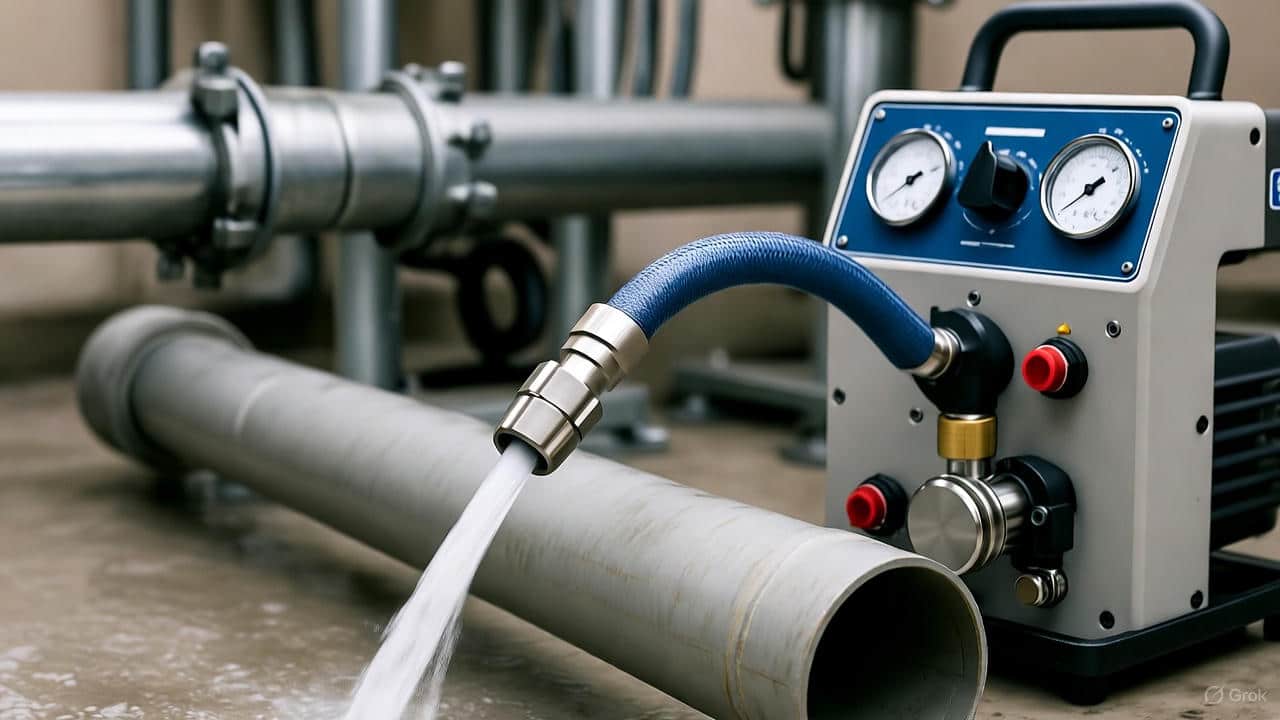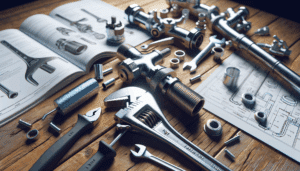Hydro jetting is one of those plumbing tricks that sounds dramatic — and it is. But it’s not fireworks; it’s controlled, high-pressure water cleaning that can blast away grease, roots, and years of buildup from your home’s pipes. If you’ve ever had a slow drain that just won’t quit, or smelled something unpleasant coming from the laundry room, this guide is for you. Let me explain how Hydro Jetting works, when it’s worth it, and what homeowners in Gilbert, AZ should expect.
Okay, so what exactly is Hydro Jetting?
Hydro jetting uses a specialized nozzle attached to a hose that shoots water at very high pressure into your drain lines. Think of it like pressure-washing the inside of a pipe. The water removes gunk, mineral scale, tree roots, and yes—years of soap and grease.
Here’s the thing: it’s not just brute force. Technicians use different nozzles and pressures to match the job — from gentle flushing to heavy-duty cutting. You might hear terms like PSI (pounds per square inch) or GPM (gallons per minute); those are the numbers that decide how aggressive the cleaning will be.
How hydro jetting actually works — plain and simple
First, a plumber usually inspects the line with a camera (we use tools like the RIDGID SeeSnake) to see what’s going on. That helps prevent surprises. Then, the hydro jetting hose is fed into the line and the technician gradually increases pressure while moving the nozzle through the pipe.
The nozzle sprays forward and backward, cutting and flushing debris out toward the sewer or cleanout. It’s like giving your pipes a deep scrub that a snake or drain auger simply can’t match.
When should you consider hydro jetting?
Hydro jetting is great when you’ve got recurring clogs, slow drains in multiple fixtures, or nasty smells coming up from drains. It’s also wise when you buy an older house and want to clear decades of buildup from the system.
But — and this matters — hydro jetting isn’t always the right first step. If your plumbing has unknown breaks, collapsed pipes, or really shallow clay lines invaded by roots, a camera inspection and potentially other repairs should come first. You don’t want high pressure forcing a weak pipe to fail.
Benefits homeowners notice (and love)
- Cleaner pipes: Removes buildup that snaking leaves behind.
- Fewer clogs: It reduces repeat blockages for months, sometimes years.
- Odor control: Eliminates the gunk that causes sewer smells.
- Cost-effective long term: You pay more up front, but you avoid frequent service calls.
You know what? There’s a satisfying metaphor here: hydro jetting clears pipes the way a good spring cleaning clears your attic — out with the old, in with better flow.
Risks and what to expect during service
Hydro jetting is powerful, which brings pros and cons. If your pipes are in poor shape, the pressure can expose or worsen a problem. That’s why pre-inspection matters. Also, some homes experience a temporary surge of debris or air during the first few days after jetting — so don’t be surprised if the water looks a little cloudy or you hear some odd gurgles; that usually settles.
Technicians should take safety steps: using the right nozzle, monitoring pressure, and starting gently. A professional who rushes is a red flag. You want someone careful, not cavalier.
DIY hydro jetting? Not usually a good idea
You can rent consumer pressure washers or handheld jetters, but household gear rarely matches the flow or pressure professional units provide. Worse, an inexperienced attempt could damage your plumbing. So yes, you could try it; but honestly, for most homeowners it’s smarter to call a licensed plumber who has the gear, camera, and know-how.
A mild contradiction: people sometimes fix small clogs with a plunger or enzyme cleaners and never need hydro jetting — yet those same homes may later end up needing it because enzyme products don’t remove grease scale. That’s why a proper inspection helps.
How much does hydro jetting cost and how often to do it?
Costs vary depending on line length, severity of buildup, and whether a camera inspection is needed. A basic range for residential jobs in Gilbert might be anywhere from a few hundred to over a thousand dollars. Here’s a simple comparison:
| Service | Typical Cost | When to Use |
|---|---|---|
| Camera Inspection | $100–$300 | Before major work or if unknown issues exist |
| Hydro Jetting (standard) | $350–$900 | Recurring clogs, multiple slow drains, grease buildup |
| Hydro Jetting (extensive/root work) | $800–$1500+ | Severe blockages or long runs |
Frequency depends on household habits. A typical family might jet once every 1–3 years; homes with garbage disposals, heavy cooking grease, or lots of tree roots might need more frequent service.
Choosing a plumber in Gilbert, AZ — what to look for
You want an experienced pro who uses a camera, carries insurance, and explains the job. Ask about nozzle types, pressure ranges, and follow-up guarantees. Local knowledge helps: Gilbert homes face unique issues like mineral scale from hard water and tree roots seeking moisture. Seasonal elements matter, too — after monsoon rains, root movement can cause more trouble.
A few quick tips:
- Check reviews: Neighbors’ recommendations are gold.
- Ask about camera work: Always get a before-and-after look.
- Get a written quote: Know what’s included and what might be extra.
Final thoughts — is hydro jetting worth it?
If you want a long-term fix for stubborn clogs and healthier pipes, Hydro Jetting often pays off. It’s not a magic wand; it’s a professional cleaning that removes years of buildup and helps your system breathe again. For homeowners in Gilbert, AZ, where hard water and tree roots are common culprits, it’s one of the most effective tools a plumber has.
Want someone local to take a look? Give Gilbert Plumbing Company a call at 480-535-0728 or Request a Free Quote. We’ll run a camera, explain your options plainly, and won’t make you feel pressured. Simple, honest service — and pipes that work like they should.



